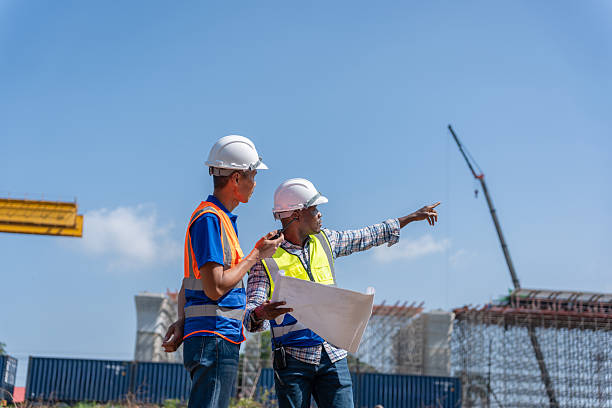
“To acquire knowledge, one must study; but to acquire wisdom, one must observe” – Marilyn vos Savant
One of the ways we learn, is through observation. By watching and imitating others, we create mental models of how certain things are done. To learn successfully, we use our attention to observe, retain, reproduce that which we observe and become motivated to do that act. Civil engineers apply the same principles when it comes to learning. This is especially true for those that work on site.
But, for design engineers, site visits are a crucial part of your learning curve. Without the ability to see how designs come to life, your abilities as a designer are somewhat stunted. This is where construction sites come in. Even a site visit lasting a few hours a week would be highly beneficial to the designer’s understanding of construction realities. The struggles of laying foundation, observing in person how soil is cut and filled can only be appreciated by site visits. No amount of imagination or computer simulation equates to this kind of learning. Makes sure to schedule regular site visits.
When on site, make you sure actively observe. That means, not just walking around, but also taking notes on people work together and communicate, how sequences are executed. Question the site workers how they communicate ideas and job tasks. Ask contractors, site engineers and foremen questions about things you wish to learn and how certain things on site can help you refine your designs. For example, ask “Can we verify the precise measurements for the retaining wall before pouring the concrete?” Take note of this and check with your designs.
While on site it also important to document observations by taking notes and photos. They help inform and refine our designs. Record keeping for a design engineer or a young engineer may not have to be intensive, but even simple progress photos can help highlight potential changes to designs and prevent repeated mistakes.
Site visits allow you to experience the various stages of construction. From the site preparation, which includes, clearance, excavation, demolition and setting out to the foundation work, structural framing, to the final stages which include post-construction and commissioning, you will have a greater appreciation and more in-depth understanding of the entire process. This will give you better context to each design decision. More importantly, you will appreciate the skill and effort required to execute a design. As a better designer, you will gain respect, build credibility and have the skills to collaborate with site engineers.
The Bottom Line
Field work is where theory meets reality. Avoiding it limits your understanding, reduces credibility, and increases the risk of design errors. Engineers who embrace the site gain practical insights, improve designs, and build stronger professional relationships — making them far more effective in the long term.
- Subscribe to Our Newsletter: Stay updated with the latest insights, tips, and innovations in civil engineering.
- Check Out These Must-Read Resources:
- A comprehensive book on civil engineering to enhance your understanding of structural design and construction techniques.
- A captivating book about the lives of great civil engineers, showcasing the pioneers who shaped the modern world.
- A practical project inspection checklist—an essential tool for every engineer involved in site supervision and quality control.
- Dive into the genius of the Renaissance with our recommended book about Leonardo da Vinci, exploring his contributions to engineering and architecture.
- Don’t miss our field notebook and journal, designed specifically for civil engineers and architects to document projects, ideas, and on-site observations
No responses yet